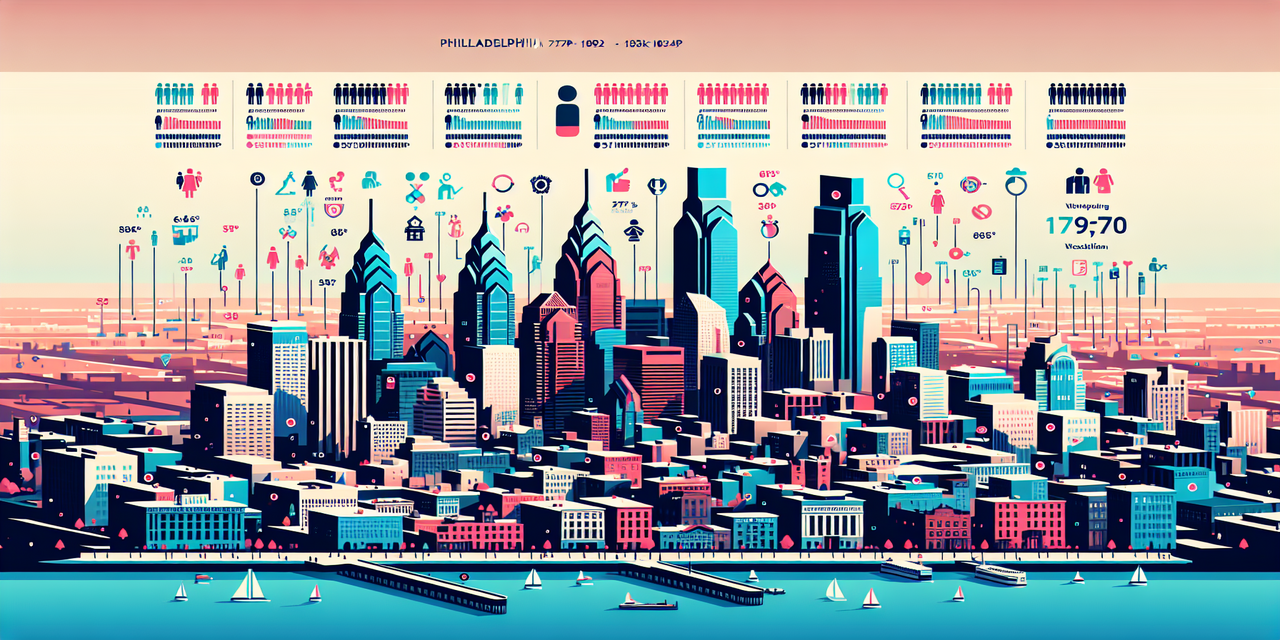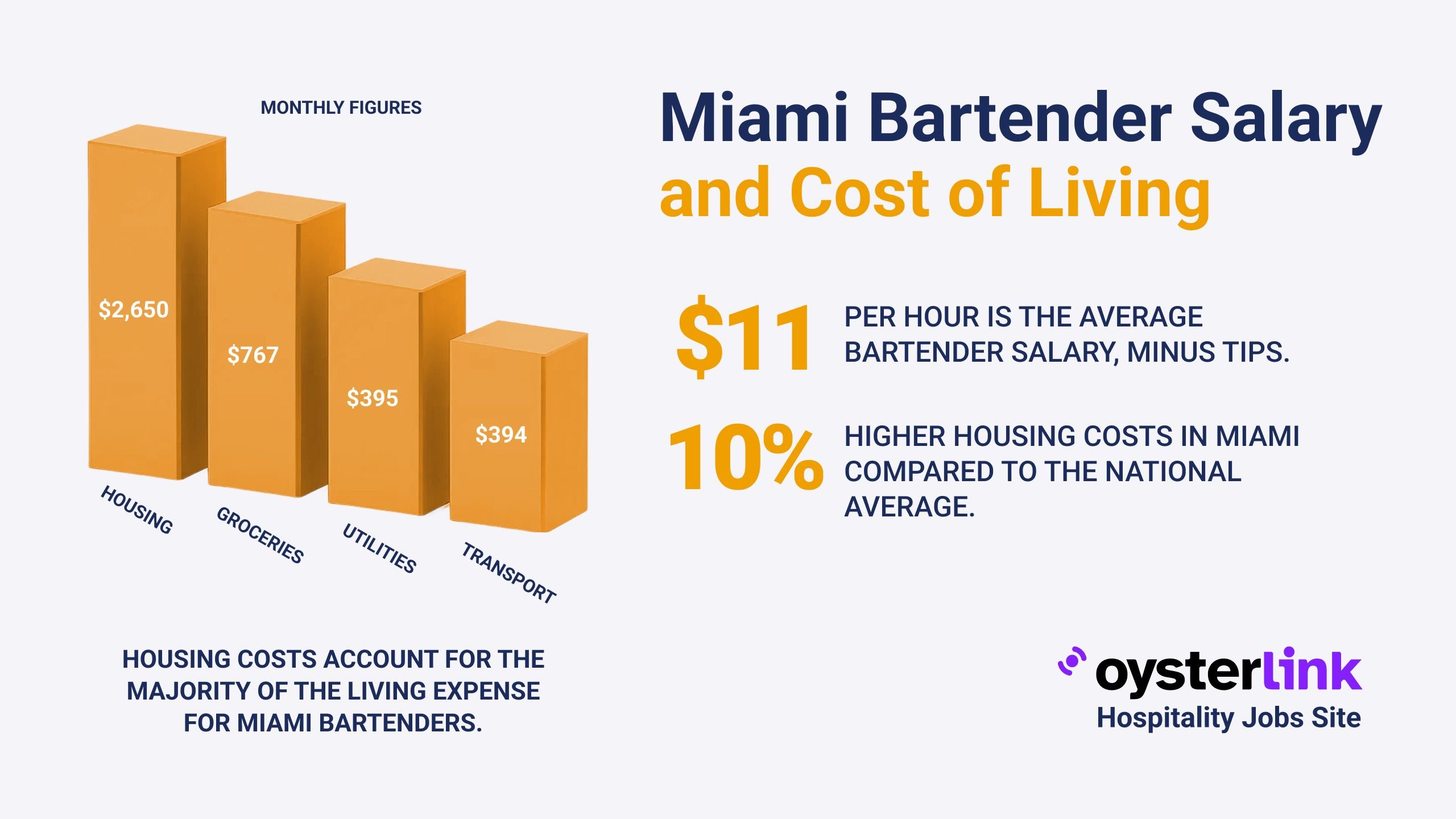Philadelphia Workforce Demographics for Bartender: Key Takeaways
- About 39% of bartenders nationally are under 30, with a similar trend expected in Philadelphia’s younger workforce.
- Women make up the majority of bartenders in Philadelphia, reflecting the city's overall female-majority workforce.
- Bartenders have diverse education levels, with many holding a high school diploma, bachelor's degree, or vocational certification.
Understanding the age, gender, and education composition of bartenders in Philadelphia reveals a dynamic and diverse workforce shaping the local hospitality scene.
This overview provides key insights into who Philadelphia’s bartenders are and highlights trends in their professional demographics.
1. Age Distribution of Bartenders in Philadelphia
Philadelphia's bartending workforce largely mirrors national trends, attracting a predominantly younger demographic. About 39% of bartenders across the United States are under the age of 30.
This youthful representation signifies that many choose bartending as an early career path or a flexible job during their early adult years.
Following the youngest group, around 35% of bartenders are aged between 30 and 40, showing that many continue in the profession beyond their twenties.
The segment of bartenders over 40 years old accounts for roughly 26%. Although smaller, this group demonstrates that bartending is a viable occupation at various stages of life.
While specific data for Philadelphia is limited, the city's vibrant nightlife and hospitality industry likely reflect a similar age distribution, underscoring the role of bartending as a popular job for younger and mid-career workers alike.
2. Gender Composition of Philadelphia Bartenders
Philadelphia's bartending workforce prominently features women, aligning with both local and national patterns in the hospitality sector.
Nationally, women make up approximately 60.5% of bartenders, with men comprising 39.5%. This gender distribution highlights a female majority within the profession.
Philadelphia’s overall workforce is also notably composed of more women than men, with 52.4% female workers, one of the highest female workforce shares among major U.S. cities.
This trend extends into Philadelphia's bartending community, suggesting a strong female presence behind the bar.
The representation of women in bartending may reflect broader cultural shifts and employment trends where women are increasingly active in service and hospitality roles traditionally dominated by men.
Employers looking for guidance might benefit from our insights on how to hire a bartender who fits their establishment’s needs.
3. Educational Background of Bartenders in Philadelphia
Education levels among Philadelphia bartenders vary widely, indicating openness to the profession from diverse academic paths.
About 33.2% of bartenders hold a high school diploma or GED, reflecting the accessibility of bartending as a starting career that does not always require higher education.
At the same time, 27.7% of Philadelphia bartenders have earned a bachelor's degree, revealing that many workers balance formal education with hospitality work.
Additionally, 15.3% carry an associate's degree, and 13% have completed vocational degrees or certifications relevant to the industry, such as mixology or hospitality training.
This breadth in educational attainment highlights bartending's role as both a professional choice for degree holders and a skilled trade for those pursuing specialized certifications. For those interested, we have a detailed mixologist job description which closely relates to the bartending profession.
4. Significance of Philadelphia Bartender Demographics
The age, gender, and education statistics shape the character and capabilities of Philadelphia’s bartending workforce.
Younger workers contribute energy and adaptability to the city's nightlife, while the steady presence of mid-career and older bartenders adds experience and mentorship.
The predominance of female bartenders not only reflects workforce trends but also promotes diversity, inclusion, and challenges traditional gender roles in hospitality.
With educational backgrounds ranging from high school diplomas to university degrees and specialized certifications, Philadelphia bartenders bring a broad spectrum of skills and perspectives to their roles.
Hospitality employers can also explore best practices for restaurant staff hiring to effectively manage this diverse talent pool.
5. Resources for More Information on Philadelphia Workforce Demographics
Employers, job seekers, and researchers can explore comprehensive and updated workforce data using the following official resources:
- U.S. Bureau of Labor Statistics – provides national and regional labor statistics, including employment, wages, and demographics.
- Pennsylvania Department of Labor & Industry – offers state labor market information, workforce development resources, and employment trends.
- City of Philadelphia Official Website – includes local economic, employment, and industry reports for Philadelphia.
Philadelphia Bartender Demographics: Conclusion
Philadelphia’s bartending workforce represents a youthful, predominantly female, and educationally diverse group contributing vibrancy and skill to the city’s hospitality industry.
Understanding these demographics helps businesses tailor recruitment, training, and workplace policies to support their bartender teams effectively.
As Philadelphia’s nightlife continues to grow and evolve, the bartender demographic profile underscores important trends shaping the future of service in the city.
Recruiters can learn how to interview bartenders effectively to find candidates that will thrive in their working environment.


.png)

.png)
.jpg)